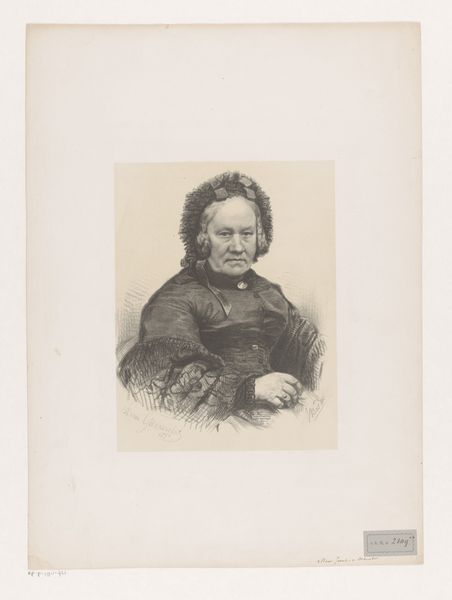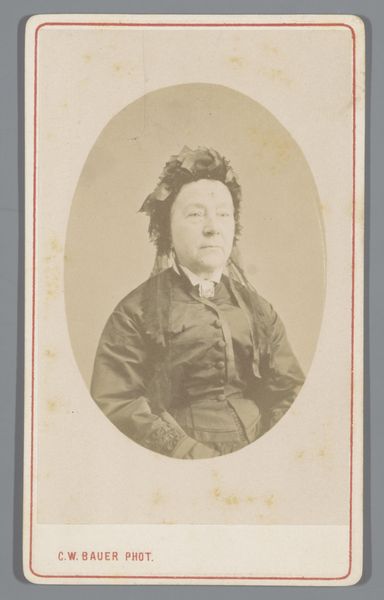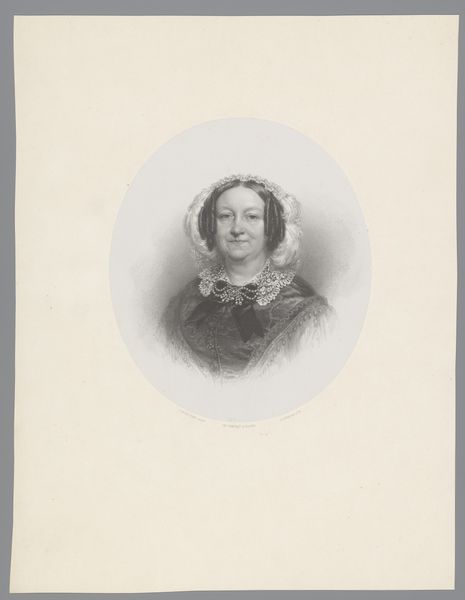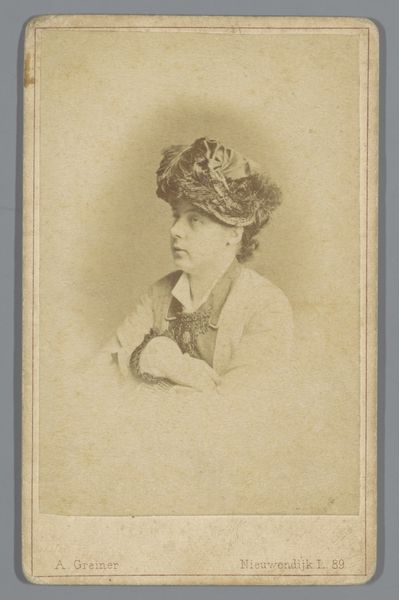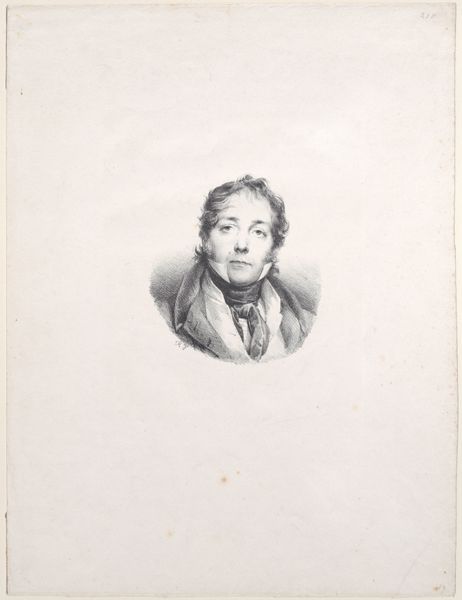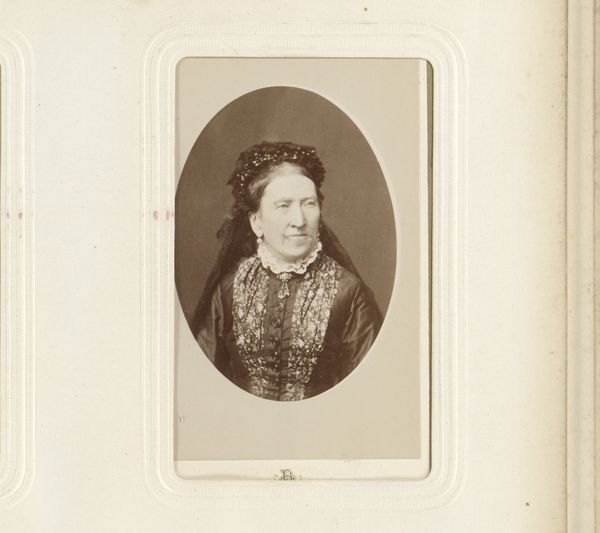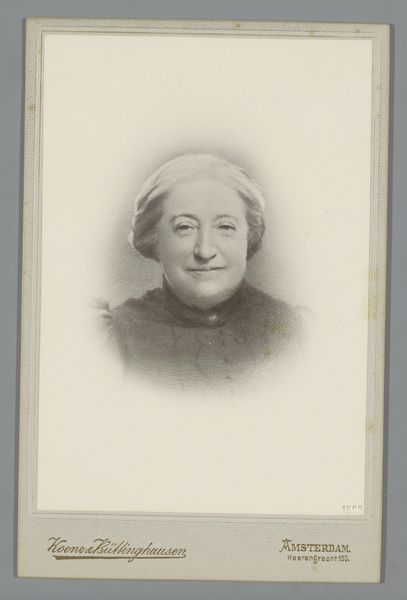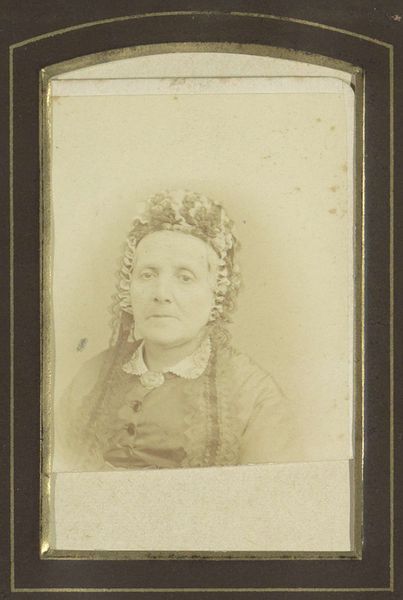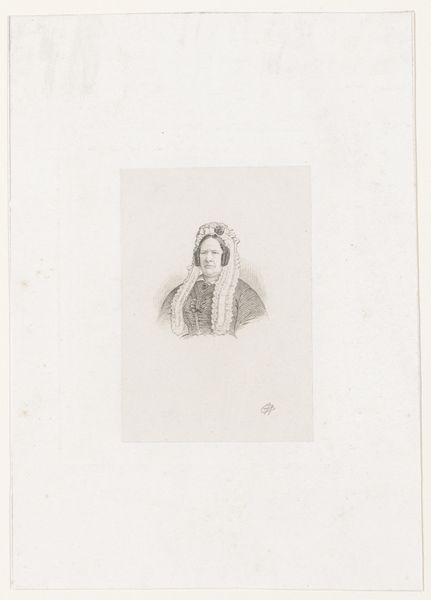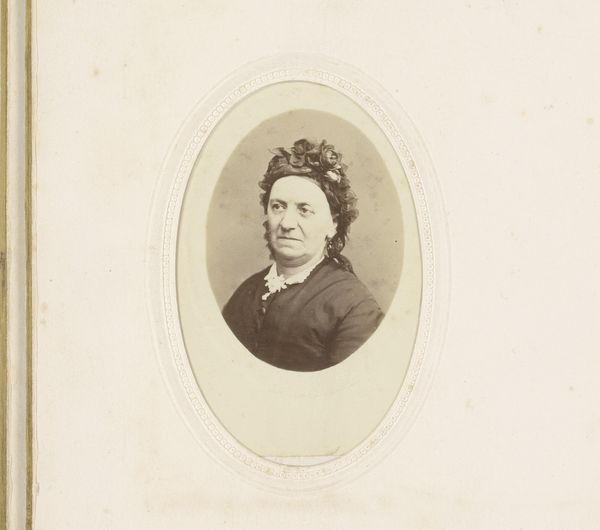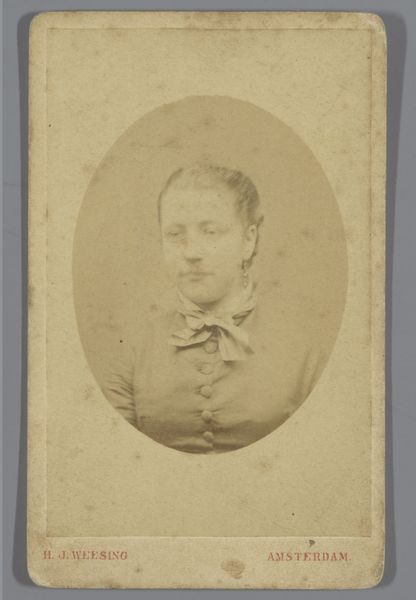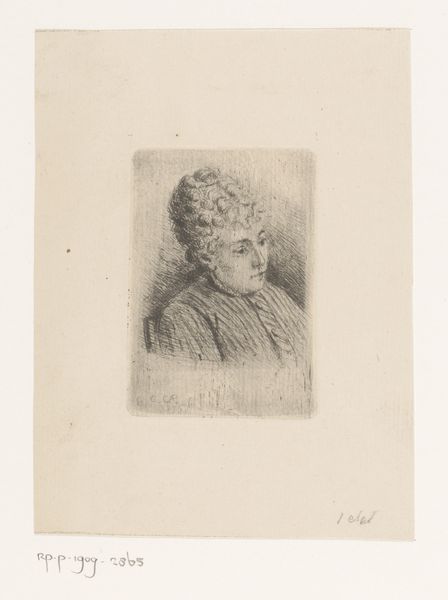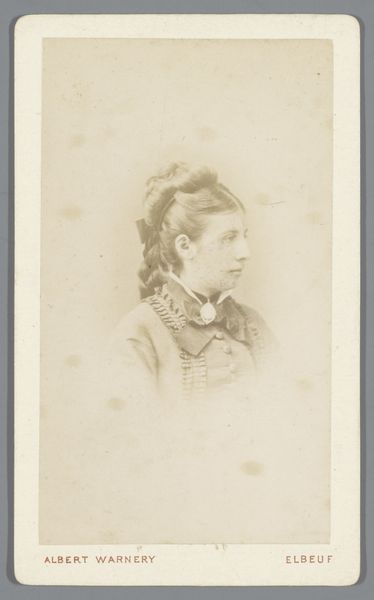
daguerreotype, photography
#
portrait
#
16_19th-century
#
daguerreotype
#
photography
Dimensions: height 106 mm, width 60 mm
Copyright: Rijks Museum: Open Domain
Editor: This is a daguerreotype, a photographic portrait from between 1855 and 1885, titled "Portrait of an Unknown Old Woman." The woman's expression is quite stern, almost confronting. It’s a simple composition, but it evokes so much. What can you tell me about how photography like this was viewed at the time? Curator: It's crucial to remember that in the mid-19th century, photography was still quite novel. Portraiture had primarily been the domain of the wealthy who could afford to commission paintings. Photography democratized representation to some extent, making portraits available to a broader public. However, even with photography, conventions dictated how subjects should be presented. Consider the role of photographic studios: they weren't merely places for image creation, but social spaces shaping how individuals presented themselves to the world. Does her clothing and the setting offer any clues to her social standing, in your opinion? Editor: Well, her ruffled cap and what looks like a fur stole seem to suggest some level of comfort, perhaps middle class. But why "unknown"? Did families not value these images, or was record keeping just inconsistent? Curator: That's a layered question. As photography became more widespread, the sheer volume of images made meticulous record-keeping challenging. Many photos circulated outside of immediate family circles and, without names inscribed, identifying subjects became near impossible as generations passed. The democratization of the medium contributed to a shift in how images were valued and archived by society, often outside institutional collections. Do you feel that this work reflects shifting societal values? Editor: Definitely. It feels like both a personal memento and a document of a changing world. I hadn’t really considered the public and political dimension of early photography beyond its technological novelty. Curator: Precisely! The act of photographing, disseminating, and archiving shaped personal narratives within the broader public sphere. Understanding these images requires attention to technological changes and to shifting cultural practices surrounding visibility and memory. Editor: That's given me a completely different perspective on the work. I will carry a new viewpoint of historic artistic practices moving forward. Thanks so much.
Comments
No comments
Be the first to comment and join the conversation on the ultimate creative platform.
